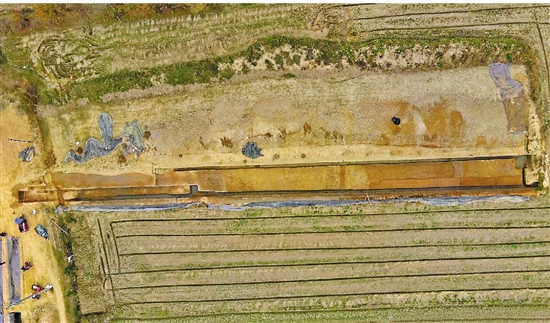Zhejiang discovers one of world's earliest rice fields

An aerial view of the Huangchaodun site in Quzhou, East China's Zhejiang province. [Photo/Zhejiang Provincial Institute of Cultural Relics and Archaeology]
The Huangchaodun site in Quzhou, East China's Zhejiang province, was revealed to have shed new light on the origins of global rice farming at a National Cultural Heritage Administration conference in Beijing on Sept 13.
The Huangchaodun site, discovered in 2021, is the 22nd site linked to the Shangshan Culture, which dates to between 11,000 and 8,500 years ago. Archaeological excavations began in 2022, since which significant progress has been made.
The site consists of two terraces and a surrounding moat. To the east, a 15,000-square-meter low-lying area was identified as the location of ancient rice paddies. Multidisciplinary research methods, including phytolith analysis and soil microstructure studies, confirmed the presence of ancient rice cultivation.
Phytolith concentrations of 2,000-7,000 grains per gram in the soil provide strong evidence of early rice farming, said Zhou Dongya, a staff member at the Zhejiang Provincial Institute of Cultural Relics and Archaeology.
Zhang Sen, an official of the provincial institute, noted that this discovery offers a critical chapter in understanding the global origins of rice agriculture, with the Huangchaodun site playing a pivotal role in tracing the roots of Zhejiang's ancient culture.
The Huangchaodun site likely marks the earliest rice field remains yet discovered in China and possibly the world, said Professor Lin Liugen from the School of Art and Archaeology of Zhejiang University.

 City brand logo - fist-and-palm salute
City brand logo - fist-and-palm salute Confucianism on campus
Confucianism on campus The culture of the academy
The culture of the academy